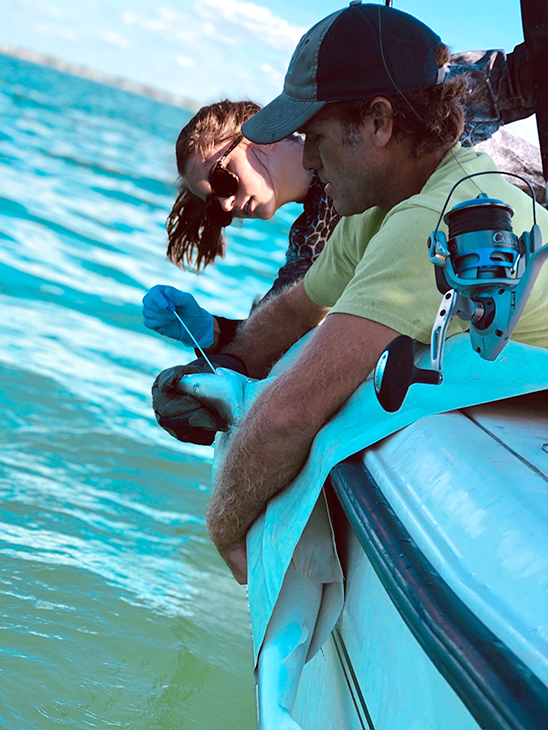Contact us
401 W. Kennedy Blvd.
Tampa, FL 33606-13490
(813) 253-3333
Since August, a UT team has been trolling the waters of Tampa Bay, sticking their hands into the mouths of sharks.

Lilli Sutherland ’20 and John Ambrosio, marine science field station coordinator, swab the mouth of a shark in research aimed to help Tampa Bay doctors treat shark bite victims.

When a human is bitten by a shark, pathogens and bacteria can transfer due to the severity of laceration often associated with a shark bite, creating a number of health issues. Bacteria can also be resistant to many different antibiotics, making it difficult for health care professionals to treat shark bite victims.

Greenberg and Sutherland hope to identify the types of bacteria living in sharks’ mouths, determine what strains offer greatest risk of infection for shark bite victims and then identify the best treatment options for shark bite victims in Tampa Bay.
More UT News